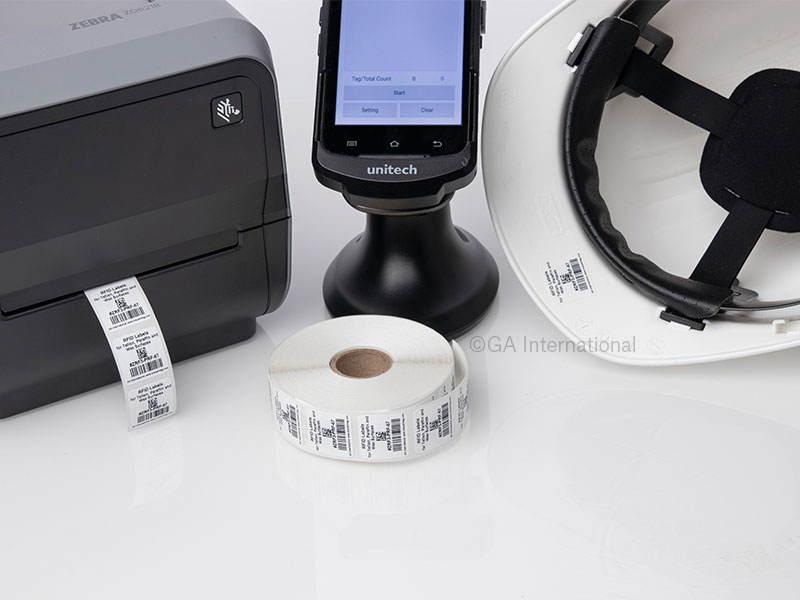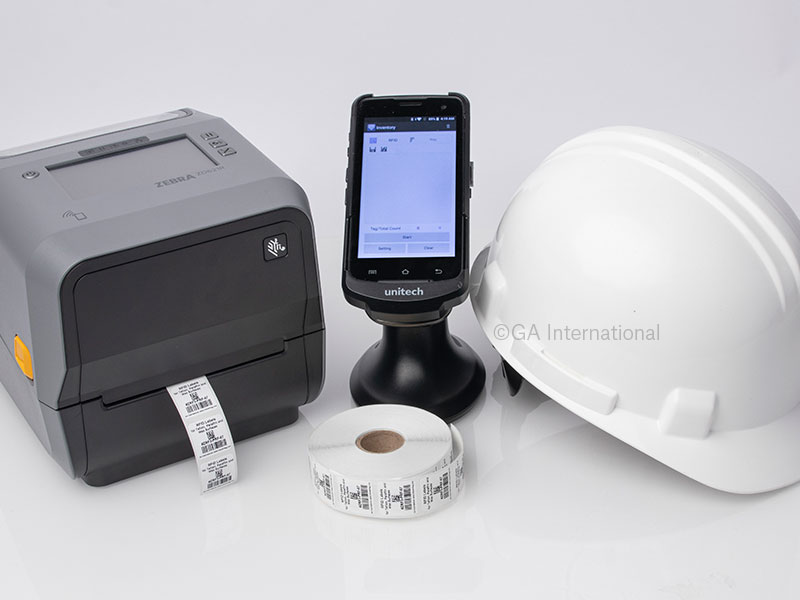Description
RFID Labels for Teflon, Paraffin, and Wax Surfaces
Size: 0.9375” x 0.9375” / 23.8 mm x 23.8 mm
Label across: 1
Color: White
Labels/roll: 1,000
Core size: 1” or 3” / 25.4 mm or 76 mm
Perforation: No
Adhesive: Permanent chemical resistant
Temperature range: -55°C to +70°C (-67°F to +158°F)
Operating temperature/RFID functional temperature range: -35°C to +85°C (-31°F to +185°F)
Recommended Ribbons: XAR-Class Xylene Resistant Resin Ribbons
Recommended Printer: Zebra ZD621R UHF RFID Thermal-Transfer Printer
Recommended Reader: Unitech Handheld UHF RFID Reader
Recommended Label software: BarTender Professional
These chemical-resistant RFID labels combine RFID technology with a high-tack adhesive label that adheres to hard-to-stick surfaces such as Teflon, Polytetrafluoroethylene (PTFE), Perfluoroalkoxy (PFA), paraffin wax, low-surface energy (LSE) plastics, and Acrylonitrile butadiene styrene (ABS). They are designed to track multiple assets and improve data collection from devices, equipment, and containers coated or made with Teflon/PTFE, PFA, and ABS materials, which often require their visual and electronic data to be resistant to water and harsh chemicals.
These RFID labels are ideal for identifying ABS, PTFE, and PFA surfaces, such as PTFE chemical bottles and containers, PTFE/PFA pipes, PTFE/PFA fittings, ABS sports and worker safety helmets, and ABS cases and housings. RFID labels for hard-to-stick surfaces are intended for the oil & gas industry, mining, construction, manufacturing, supply chain, and sports facilities. They will integrate with personnel and asset tracking systems to ensure the traceability of staff and equipment.
These RFID labels (Class 1, Gen 2) are compatible with handheld, fixed, and integrated UHF RFID readers. Using dedicated RFID thermal-transfer printers, they can be printed and encoded with up to 32 hexadecimal characters of information. The printout obtained when using our recommended XAR-class of ink ribbons, along with the electronic components of these labels, can resist exposure to xylene, toluene, alcohols, and other organic solvents and chemicals without additional protection.
The size of the RFID labels for Teflon, Paraffin, and Wax Surfaces can be customized upon request.
Benefits:
- 12” omnidirectional read range*, without direct line-of-sight ensures quick, easy, and accurate reading from every angle
- Read multiple items and track staff at the same time**
- Adhere to hard-to-stick surfaces, including paraffin wax, Teflon/PTFE/PFA, and ABS surfaces
- Withstand exposure to harsh chemicals and solvents
* Labels should not be enclosed by metal surfaces as this may cause interference that can affect their ability to be scanned/read.
** When using our recommended RFID reader. Read range can vary according to the RFID reader being used.


















Reviews
There are no reviews yet.